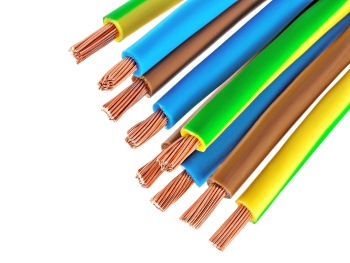 Author: Joey Wan
Author: Joey Wan  August 02,2022
August 02,2022
Cables are divided into single-core cables and multi-core cables, and what are the differences between multi-core cables and single-core cables?
1. The two ends of the single-core cable are directly grounded. The metal shielding layer of the cable may also generate a circulating current that can reach the current carrying capacity of the cable, and waste electric energy to cause loss. When the current is not very large, it is better to use a single-core cable, such as household use. cable. The single-core cable has a certain strength, and it is more convenient to thread and connect. In addition, depending on the environment of use, a single-core cable can also be selected.

2. A multi-core cable is a cable with multiple mutually insulated conductors in the outer insulating protective layer of the cable. Multi-core wires are generally three-core wires, because during the operation of the cable, the sum of the currents flowing through the three cores is zero, and there is basically no induced voltage at both ends of the metal shielding layer of the cable. When the current is large, the required cable is relatively thick, and it is more suitable to use a multi-core cable. If single-core cables are used, due to the skin effect, the current flows only on their surfaces, and many waves in the center part.
3. The difference between single-strand copper wire and multi-strand copper wire is mainly in its different structure. Because multi-strand copper wire is soft and not easy to break the core, it is suitable for the back and forth movement of the curve tension in the installation of the wire in the pipe. It is not easy to pull (unless it is a straight line); the price of plastic insulated wires of the same specification is higher than that of single-stranded wires. One is that the process is complicated, and the other is that the copper material is purer; single-strand copper wires are more expensive than multi-strand copper wires. In other words, it is more convenient in terms of line connectors and equipment wiring.
4. Multi-strand copper wires generally need to be crimped or welded wire noses, etc., especially for BVR multi-strand copper core wires with a domestic wire diameter of less than 4 square meters, according to GB50303; Construction Quality Acceptance Specification for Building Electrical Engineering; Article 18.2 stipulates that the cross-sectional area is in The multi-strand copper core wire terminal of about 2.5mm2 should be connected with the terminals of equipment and appliances after tightening the tin lining or connecting the terminals.
5.The single-core is strong and durable, and has good conductivity; single-core wires are suitable for use in fixed places. For example, single-core wires in the wall are generally very hard, and are easily broken by repeated bending. Generally, single-core wires are used, which is convenient for configuration and multi-core. Laying through pipes is easier, but more wasteful.
